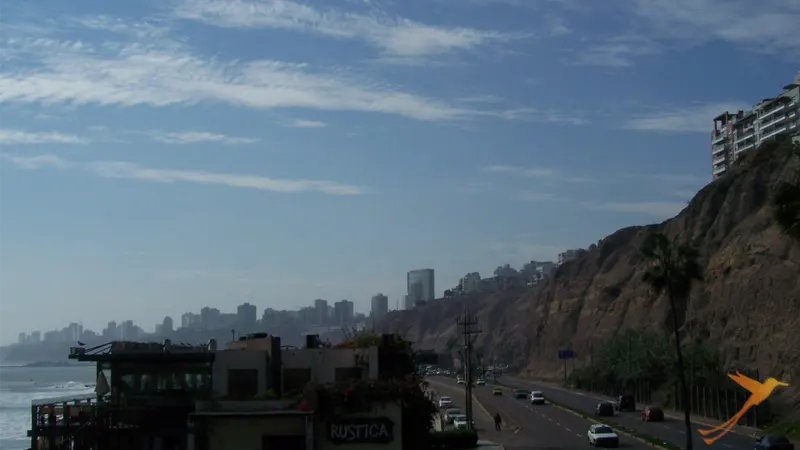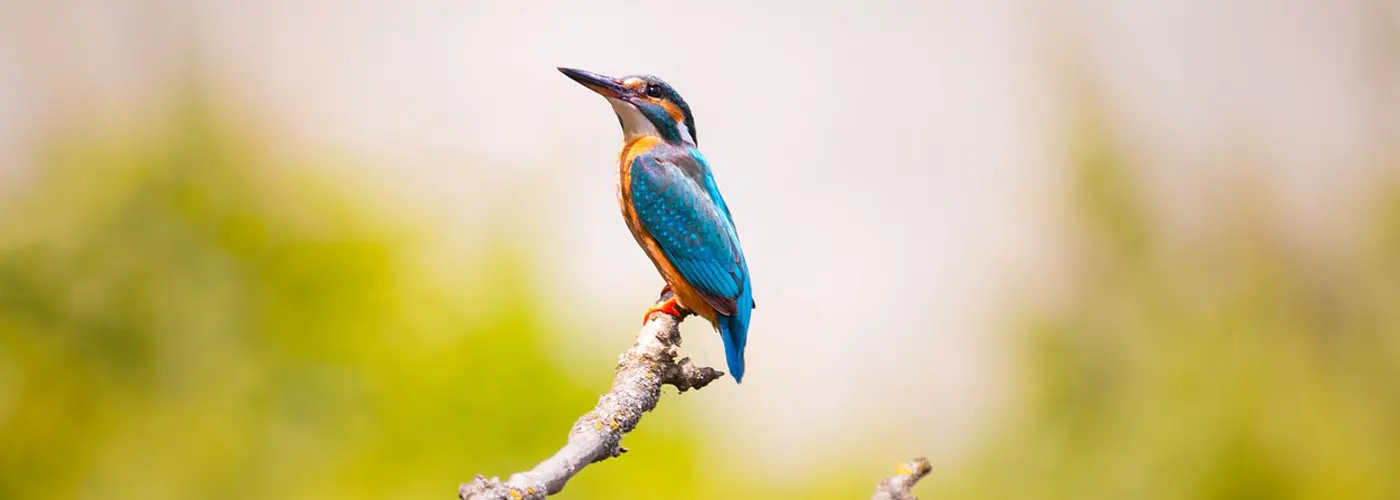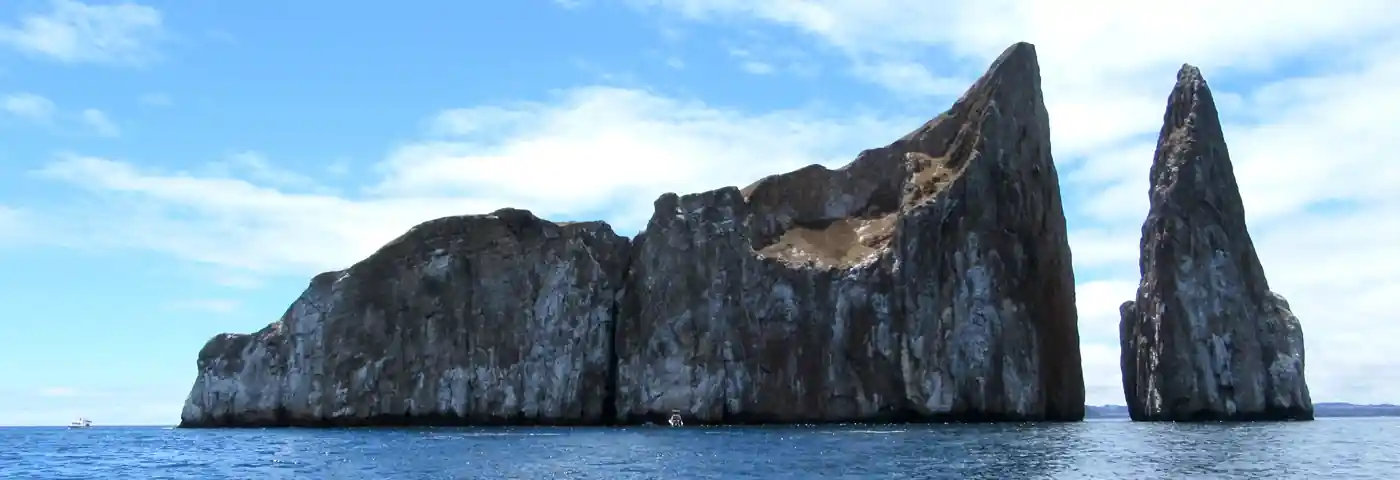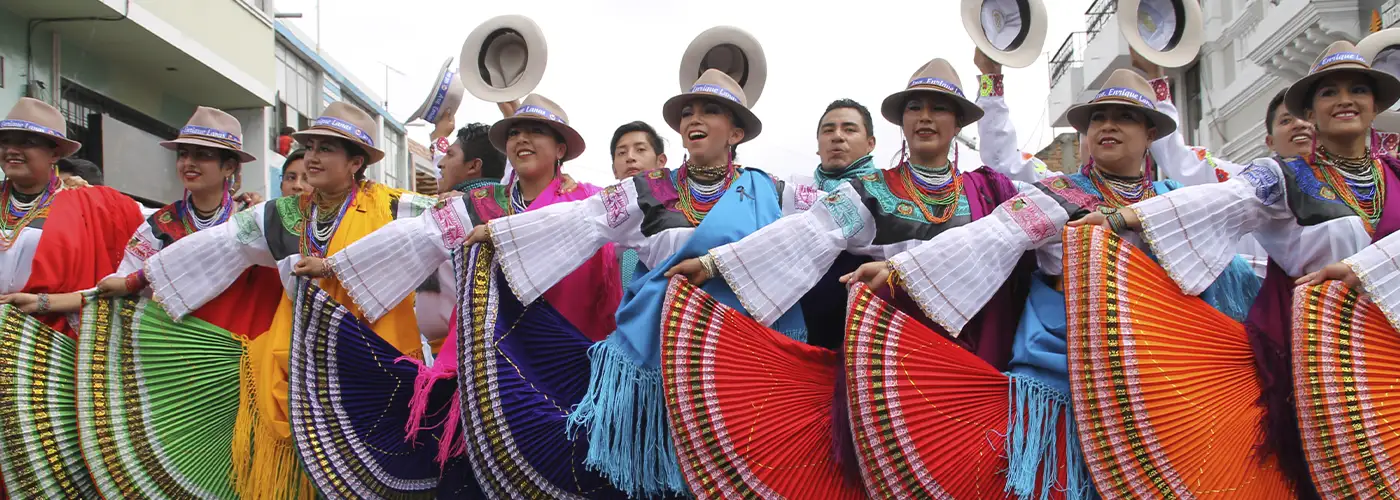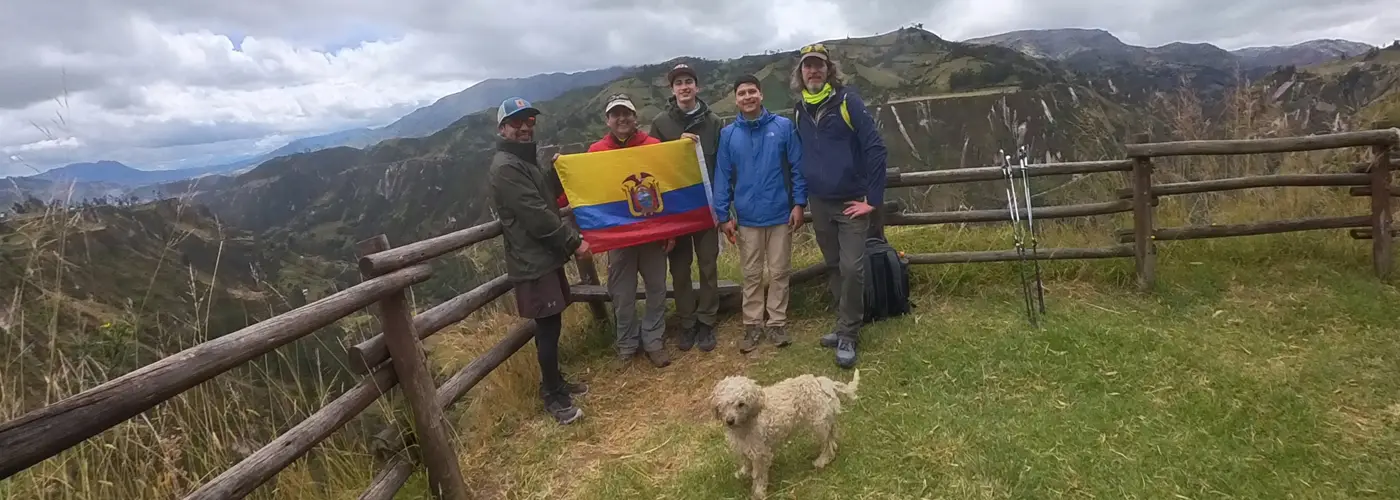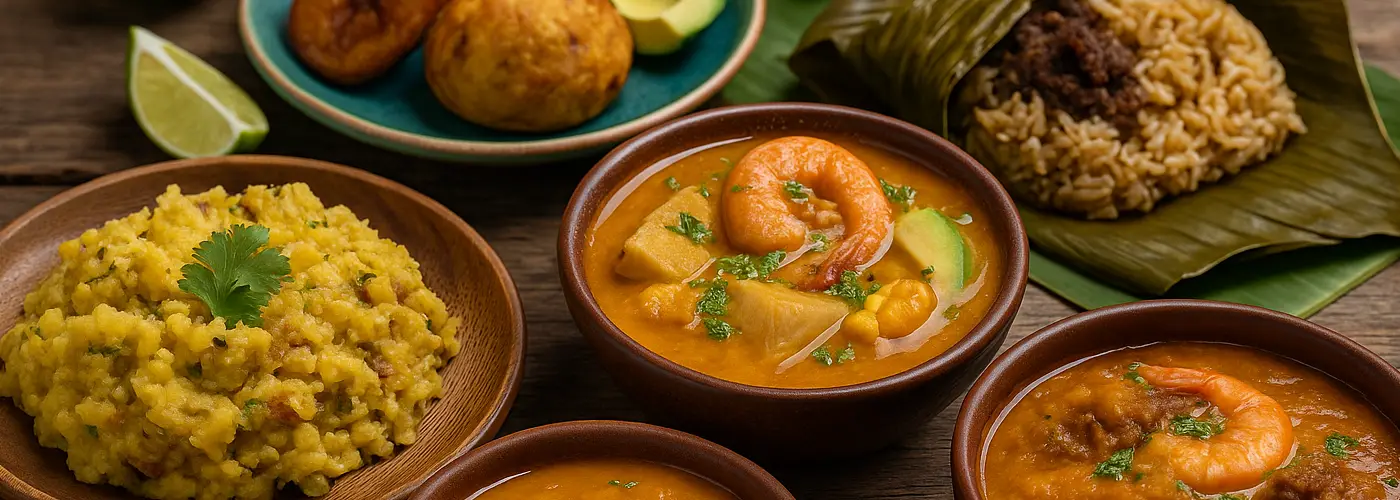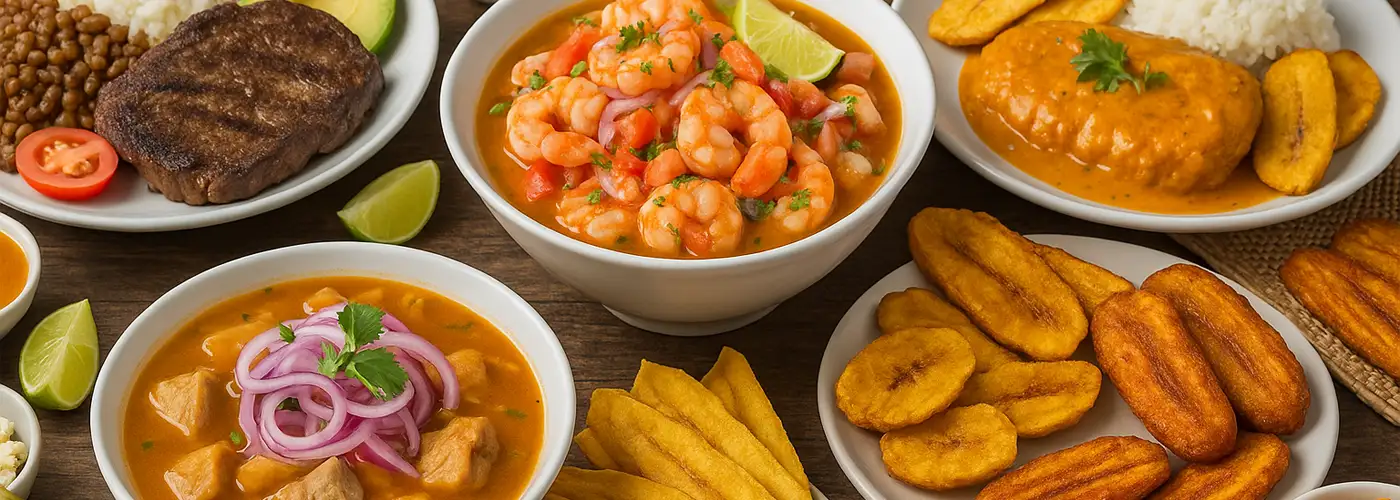
In this and the next two blog articles, we will take you to exciting places that you should not miss on your trip to Peru.
Peru's capital Lima and its many sights
With over ten million inhabitants, Lima, the capital of Peru, is not only the political and economic center of the country, but also a cultural melting pot in which the influences of Indigenous, Spanish and African cultures merge harmoniously. The city offers a multitude of sights that have something for every traveler – from historic buildings and museums to impressive landscapes and culinary highlights. In this blog, we present some of the most important and interesting sights in Lima.
The Plaza Mayor/ Plaza de Armas
The best starting point for exploring Peru’s capital is the Plaza Mayor (also known as Plaza de Armas). On one side of the square is the Palacio de Gobierno, which was completed in 1938. The presidential palace, built in the French Baroque style, is still the official residence of the Peruvian president. We recommend watching the classic changing of the guard at lunchtime and if you are in Lima on a Saturday, you can also visit the palace from the inside as part of a tour. The impressive Lima Cathedral, whose foundation stone was laid in the 16th century, is enthroned on the opposite side. Over the course of time, various architects have made changes to the cathedral, so that today it displays different styles from Renaissance to Baroque and Classicism. Other important buildings on the Plaza Mayor are the town hall and the archbishop’s palace, both with colonial wooden balconies. Tall palm trees and a fountain in the middle of the square complete the ambience.
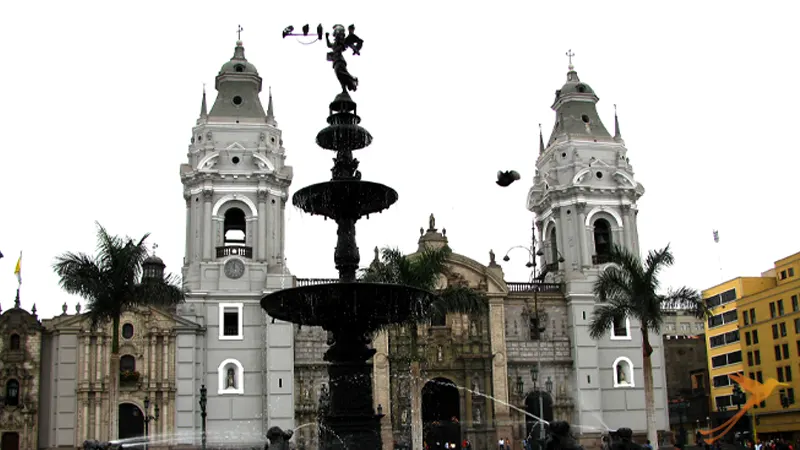
Iglesia y Convento de San Francisco
Just a few minutes’ walk from the Plaza Mayor is the three-nave, yellow San Francisco church with its impressive convent (Convento de San Francisco). The convent is not only known for its Baroque architecture, but also for its extensive catacombs, which served as one of the city’s first cemeteries. It is estimated that over 70,000 bodies were buried here. Visitors can wander through the underground corridors and see the impressive collection of human remains that are still carefully stacked in pits. In the monastery itself is an impressive library with old books bound in lambskin and covered with wooden covers. With its high shelves, dark wood and winding staircases, the library is somewhat reminiscent of Harry Potter. Particularly worth seeing is the huge painting of the Last Supper, which is a Peruvian interpretation of the biblical event. Other famous works of art and paintings are also exhibited in a museum.
Museums in Lima
Those interested in the history and culture of Peru’s indigenous peoples should not miss the Museo Larco. This renowned museum houses one of the most important collections of pre-Columbian art in Latin America. It is housed in an elegant 18th century mansion and displays more than 50,000 exhibits, including beautifully crafted ceramics, textiles and jewelry. Particularly fascinating is the collection of Moche ceramics, which reflect the life and rituals of ancient
Peruvian cultures. The Museo Nacional de Arqueologia, Antropologia e Historia del Peru is also particularly interesting. This museum offers an insight into all the Peruvian cultures that have existed over the centuries and houses various artifacts and carvings.
Miraflores
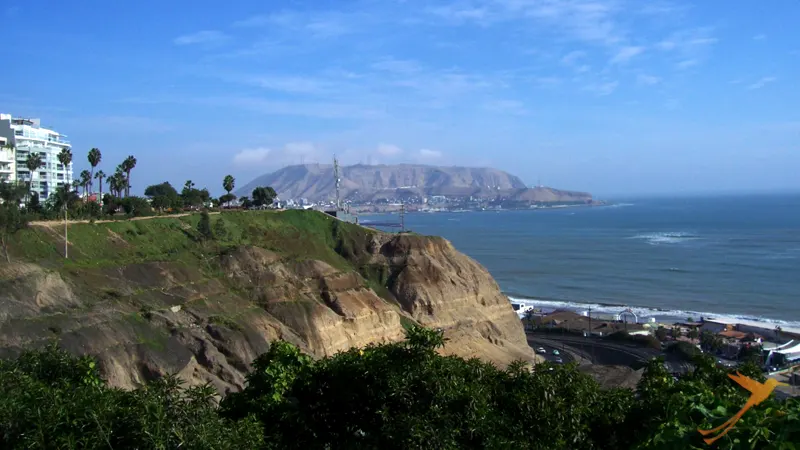
The modern district of Miraflores is one of the most popular tourist destinations in Lima. It is located directly on the Pacific coast and offers spectacular views of the ocean. The best hotels and restaurants in the city are located here, which is why most visitors to Lima stay here. The 5-kilometer-long coastal promenade, which stretches along the cliffs, is ideal for walking, jogging or cycling. Benches, parks and restaurants invite you to linger. From here, visitors can watch paragliders take off from the cliffs and soar over the Pacific. You can also make yourself comfortable on the beach and watch the surfers and paragliders from there, or try your hand at surfing yourself. Miraflores is also home to the colorful Indian Market, which is ideal for a stroll, and a huge shopping arcade with numerous different stores.
Huaca Pucllana
The ancient adobe pyramid Huaca Pucllana rises up in the middle of Miraflores. This archaeological site dates back to the time of the Lima culture, which had its political and ceremonial center in Lima from 200 to 700 AD. The pyramid, made of mud and clay, was an important religious and administrative center. Thanks to the little rain in Lima, it has remained almost intact for over 2000 years, despite the many earthquakes in the region. Visitors can tour the ruins and learn more about the history and significance of this site. In addition to the ruins, there is a small museum that exhibits artifacts and information about the Lima culture. The contrast between the ancient ruins and the modern skyscrapers rising in the background is particularly impressive.
Parks in Lima
The two most beautiful parks in Lima are located in Miraflores. Parque Kennedy is located in the heart of the modern district and is a lively meeting place for locals and tourists alike. The park is known for its many cats, which roam freely and are lovingly cared for by the residents. At weekends, art and craft markets are often held in the middle of the square, where local artists sell their work. There is also music and a dance floor where Lima residents like to dance the afternoon away. There are numerous restaurants, cafés and bars around the park serving Peruvian and international cuisine. Another very popular park is the Parque del Amo, whose seating areas decorated with mosaic tiles offer a wonderful view of the ocean and the sunset. The “El Beso” statue, which depicts a couple in love during an intimate kiss, is particularly popular.
The trendy Barranco district
The Barranco district is the artistic heart of Lima. It is located south of the city center on the coast and is considered the city’s trendy district. With its historic, colorful architecture and various beautiful cafés, it attracts visitors from all over the world every day. The art scene in this district is particularly large. It ranges from graffiti and street art to various art exhibitions. The Museum of Modern Art is also located in this district. At night, this part of the city turns into a party district with various themed bars. Romantics like to visit the wooden bridge “Puente de los Suspiros”. Legend has it that if you hold your breath while crossing the bridge, a wish will come true.
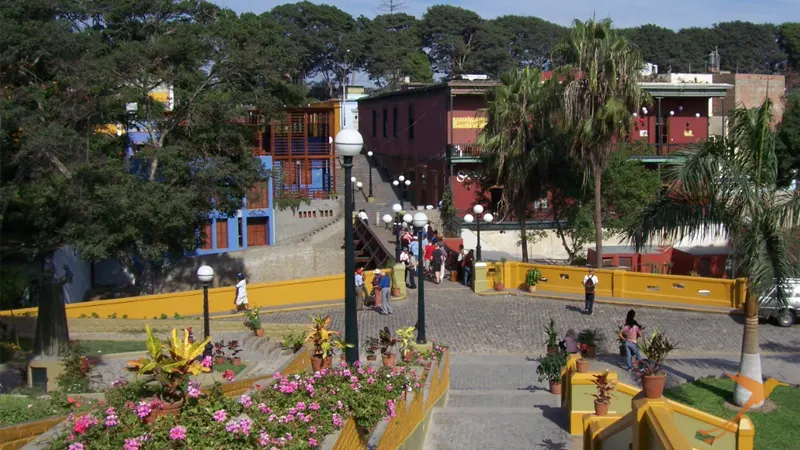
El Barrio Chino - Chinatown
During the 19th and 20th centuries, there were many Chinese immigrants, particularly on the coast of Peru. Naturally, many immigrants also settled in Lima. The lively and bustling district stretches through 8 streets and is known for its many Chinese restaurants. The so-called Chifa restaurants are particularly popular. Chifa is a culinary tradition that mixes Chinese dishes with Peruvian ingredients. It came about because the Chinese were unable to get hold of all the typical ingredients for their dishes at the time, so they had to get creative and use what was available in Peru. The dish quickly became very popular with Peruvians too.
Other sights in Lima
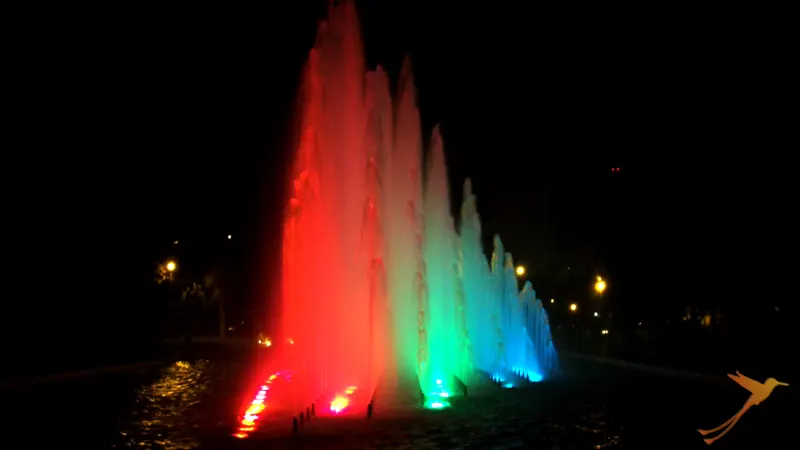
Other sights in Lima include the Gamarra district, the Palacio de Torre Tagle, the Circuito Mágico del Agua and the Cerro San Cristóbal. The Gamarra district is a “city within a city”, with thousands of fashion stores and tailors offering a huge selection of fabrics and clothing spread over six blocks. Another highlight is the Circuito Mágico del Agua, a fountain show in the Parque de la Reserva, which features 13 illuminated fountains, music and colorful lights. Lima’s historical treasures include the Palacio de Torre Tagle, an 18th century baroque palace built by the treasurer of the Spanish fleet. Today it serves as the seat of the Ministry of Foreign Affairs and fascinates with its artistically designed, Moorish-inspired façade made of stone and plaster. Northeast of the city is the Cerro San Cristóbal, a hill with a viewing platform and a large white cross. From here, there is a spectacular panoramic view over the entire city, which is particularly impressive at sunset.
Pachacáma
Around 30 kilometers south of Lima lies the ancient site of Pachacámac, which was once an important religious center for pre-Columbian cultures. The ruins of Pachacámac extend over a large area and offer a fascinating insight into the life and rituals of the ancient Peruvians. Particularly worth seeing is the Templo del Sol, a massive adobe building dedicated to the Incas. Pachacámac was once an important place of pilgrimage, where pilgrims from all over Peru made offerings to ask the gods for prosperity and protection.
Lima is therefore a city that offers a wealth of cultural, historical and scenic attractions. From the colonial architecture in the historic center to the modern districts such as Miraflores and Barranco, there is something for everyone. A visit to this vibrant metropolis is an unforgettable experience and offers a deep insight into Peru’s fascinating history and culture. To get to know more sights in Peru, you are welcome to read through our other blogs or check our Peru Highlights Tour.
